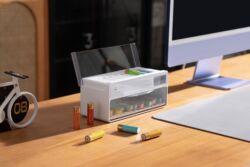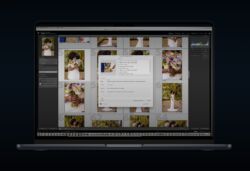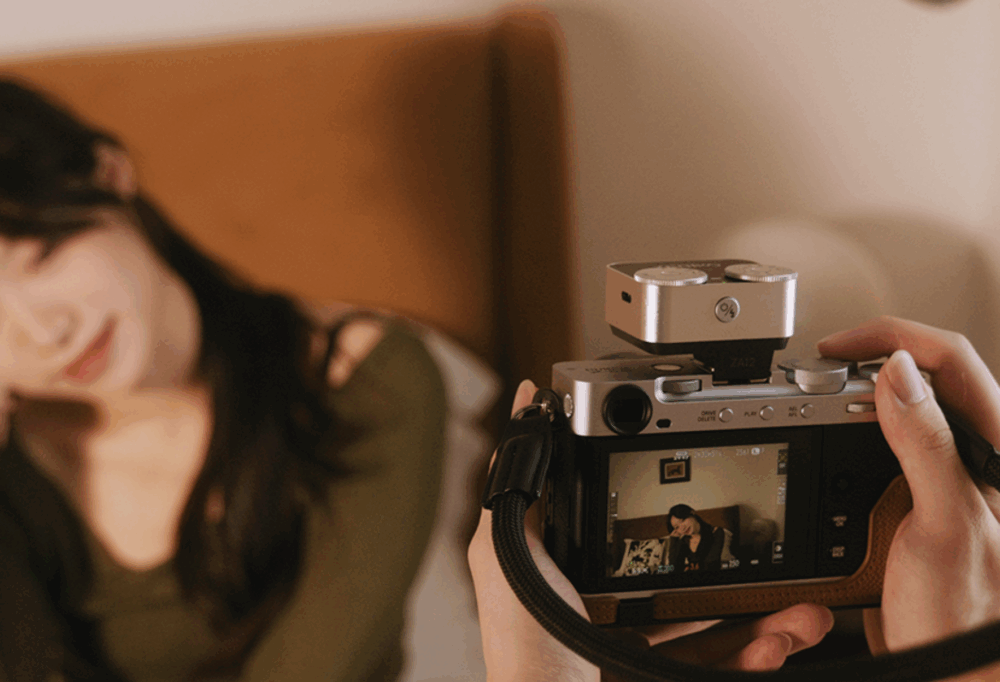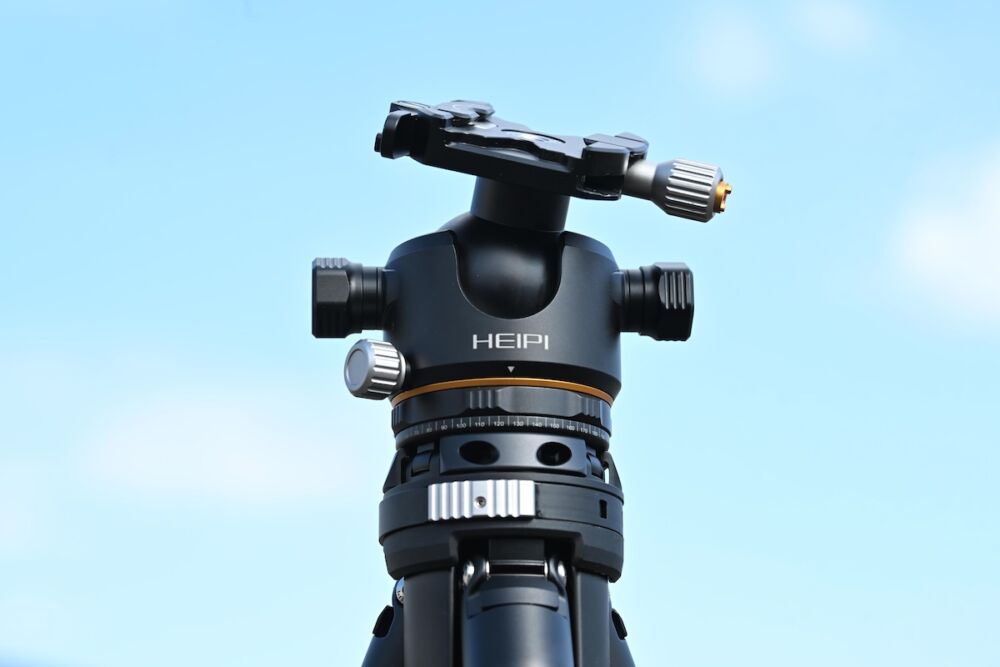The Nikon D780 is a marriage of everything great from both the DSLR world and the new Z Mirrorless world. In essence, they have created a perfect hybrid camera, in a surprisingly comfortable, economic package. Is it one of the best DSLRs we’ve ever used? Yes. Are DSLRs “dead”, as some people say? No, absolutely not. DSLRs are alive and well. Long live the DSLR!
Okay, seriously, in this full review, we’ll explain exactly why you might be interested in the Nikon D780, and why you maybe should just buy a Nikon Z6 instead. Both cameras are incredibly spec’d and affordable, making Nikon’s sphere of digital cameras one of the most exciting on the market today.
In other words, whether you want an optical viewfinder or an electronic viewfinder, you should probably be paying attention to what Nikon is doing. Or, if you still like BOTH types of cameras, you may have just hit the jackpot…
[Related Reading: Nikon P950 Review | This Compact Camera Zooms To 2000mm]
Nikon D780 Review – Quick Verdict
- The 24.5-MP full-frame (FX) CMOS sensor is one of the best full-frame sensors on the market today, as long as 24 megapixels is more than enough for you. (It probably is!)
- Nikon upped the usefulness for landscape and nightscape long exposure photography significantly by extending the native shutter speed range from the typical 30-seconds to whopping 900-second exposures, built-in!
- The EXPEED 6 image-processing engine means the camera is capable of ample speed, making it an affordable sports flagship alternative.
- WIth UHD 4K30 Video, N-Log, & 10-Bit HDMI Out, the D780 boasts impressive cinematic abilities.
- The multi-CAM 3500 II 51-Point AF System means that, although the AF points aren’t as spread out as a D5 or a Z6, the autofocus is incredibly fast and reliable, in fact, it’s some of the most trustworthy autofocus of any DSLR we’ve ever tested!
Nikon D780 Specifications
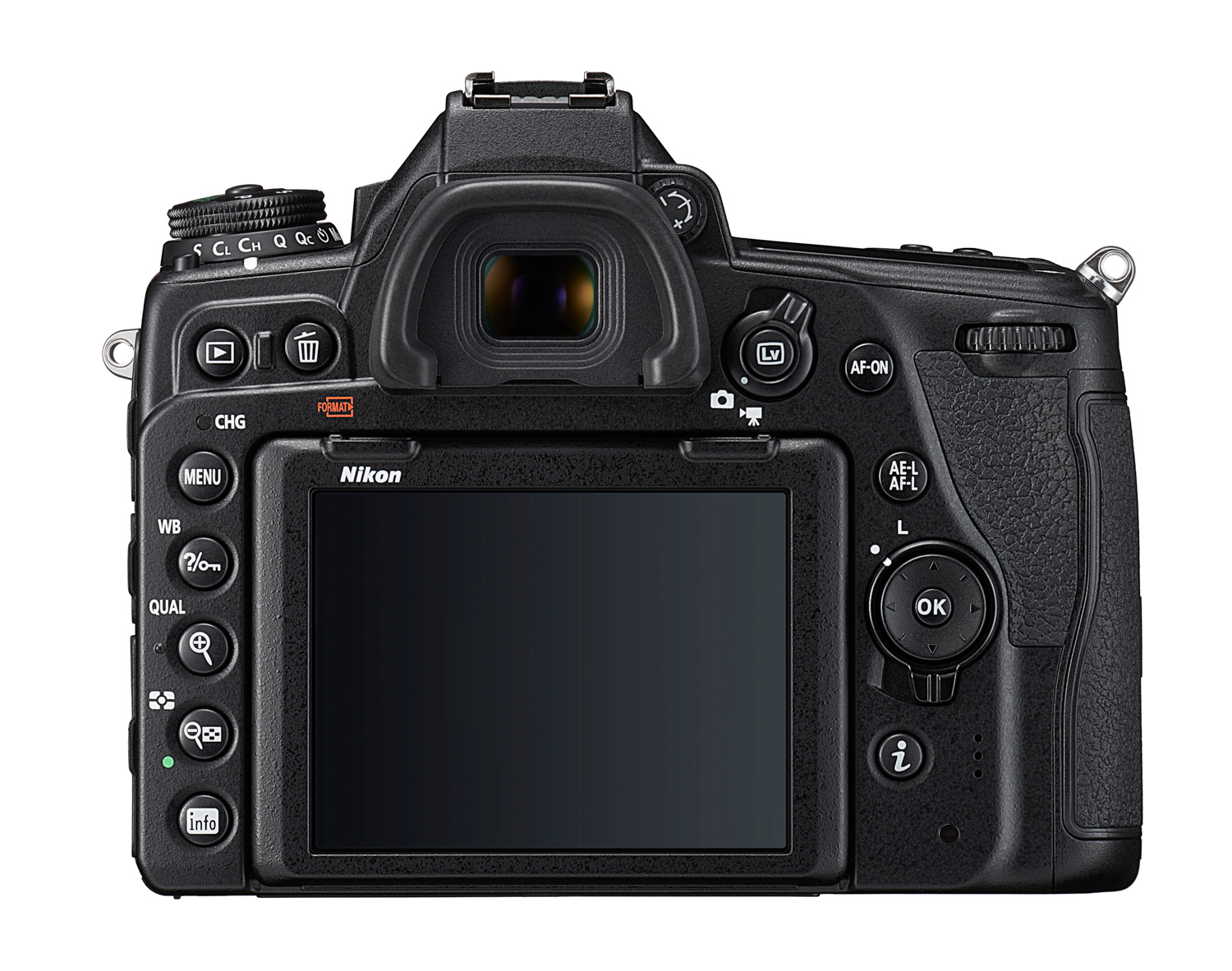
- Sensor: 24-megapixel BSI CMOS sensor
- Lens Mount: Nikon F (DSLR)
- Still Images: NEF raw, 12-bit, 14-bit, lossless compressed, lossy compressed (all FX full-frame 24 MP), DX (1.5x, 10.5 MP), 1:1 FX (16 MP), 16:9 FX (20 MP)
- Video: 4K UHD (3840×2160) @ 23.976/25/29.97p, HD (1920×1080) @ 23.976p/25p/29.97p/50p/59.94p/100p/119.88p
- ISO: 100-51200 Native, 500 to 204800 Extended
- Autofocus: Optical Phase-detection, 51 pts (15 cross-type), On-sensor (live view AKA mirrorless) Phase-detection, 273 pts
- Shooting Speed: 12 FPS, 100-frame buffer (~2x greater with 12-bit compressed NEF)
- Shutter Speeds: Up to 1/8000 sec mechanical, down to 900 seconds (15 min), plus Bulb & Time
- Viewfinder: Optical Pentaprism, 100% coverage, 0.7x magnification
- Metering Range: EV -3 to EV 20
- Connectivity: USB-C (3.1), HDMI C (mini), Headphone (3.5mm), Microphone (3.5mm), Wifi, Bluetooth
- LCD: 2.5M dot 3.2″ touchscreen
- Storage: Dual SD, SDHC, SDXC, UHS-II (both are the faster type)
- Battery: Nikon EN-EL15b, rated to 2200 shutter clicks per charge
- Body: Metal frame, weather-sealed
- Size: 5.65 x 4.55 x 2.99″ (143.5 x 115.5 x 76 mm)
- Weight: 1.85 lb (840 g)
- Price: $2297 (B&H)
Nikon D780 Review | Who Should Buy It?


Wedding & Portrait Photographers

Wedding photographers need reliable cameras, plain and simple. They need a powerful, reliable autofocus system, killer battery life, and backup features such as dual card slots. For those who shoot extremely high volume, having 12-bit compressed raw is one of the best space-saving file formats on the market if you consistently shoot 2-3K images in a day.
The D780 is the camera I wish I had when I got into wedding photography, and it’s the camera I could use for the rest of my life to shoot weddings, if I had to pick one camera.
Landscape & Travel Photographers

Landscape photographers often just look for the camera with the most megapixels, but it’s also about rugged durability, and lightweight portability. The D780 offers both of these dependability features, and its 24-megapixel sensor is nothing to sneeze at. Remember, if you’re obsessed with megapixels, a simple panorama (made even easier by Lightroom’s raw DNG panorama tool now) can easily take you to 50-100+ megapixels with any camera!
A D780 will be a dream camera for adventurous landscape and nightscape photographers, with its incredible balance of image quality at both low and high ISOs, plus its brand-new feature- you can shoot 60-sec to 900-sec long exposures without having to go into “bulb” or “time” shutter speeds!
Timelapse, Nature Video, & Outdoor Content Creators
With its updated built-in timelapse functions, including a 100% silent shutter mode that is extremely efficient and has super-smooth exposure increments for day-to-night timelapses, the D780 makes an ultimate timelapse camera for those who are looking to get into 4K timelapse video making.
Anyone who is a “content creator” making travel, outdoorsy, or other “wanderlust” type content, you’ll enjoy the D780’s longevity, too. From great battery life to durable build quality, it’s a long-term investment that will pay off. If you’re not going to think of “jumping to mirrorless” soon, that is. (Although as a content creator myself, I’d be happy to own both a D780 and a Z6! I’d put them both to very good use filming video and timelapses, shooting stills & long exposures, etc…)
Action, Sports & Wildlife Photographers

Action of any kind, from weddings to sports to wildlife, can be demanding of both autofocus and image quality. Many cameras deliver one but not both; the D780 offers some of the best performance in every regard, especially for a DSLR that can also act like a mirrorless camera.
Photographers can trust the D780’s autofocus, FPS, and buffer to be almost as impressive as a D500 or D850. If anything, the autofocus is maybe more reliable, but we found it hard to tell based on real-world conditions. The bottom line is, it’s really good, and the dual UHS-II SD card slots mean that your professional work can be backed up without fussing over a 2nd card slot being painfully slow.
Videographers


If you shoot video, then let’s be honest, you’re probably very tempted by mirrorless right now, and rightfully so! Still, there are plenty of people who already have a bunch of Nikon F-mount lenses that they’d like to use natively, or people who still just like optical viewfinders. Either way, know this- once you flip the D780 into live view mode, you’ve got an impressive video camera.
Nikon Z6 VS Nikon D780 – Which One Should You Buy?

[Related Reading: Nikon Z6 Review – Does Sony Have Serious Competition?]
Okay, let’s wake up and smell the coffee. Mirrorless is here to stay, and it has a lot of advantages. So, should you forsake your beloved DSLR, and join the “EVIL” world? (EVIL was the acronym that lost to “MILC”, it stood for “Electronic Viewfinder, Interchangeable Lenses”…)
Not necessarily. Simply put, with the D780 on the table representing (almost) DSLR perfection, the advantages of mirrorless are narrowed down to literally just three or four things:
- Which type of viewfinder do you prefer? Optical viewfinders are tried-and-true, you can always rely on them to show you exactly what you’re about to take a picture of. EVFs, on the other hand, show you what the picture will look like, (WYSIWYG), however, they have drawbacks that can hinder your shooting readiness, and eye fatigue when staring at a tiny electronic display all day is a very real thing. You should try both a D780 and a Z6 if you can, and see which experience you prefer.
- Do you want IBVR? (IBIS, that’s sensor-based stabilization) Only the Z6/Z7 have it; Nikon DSLRs must rely on optical VR, which not all primes have. Simple decision, if you shoot a lot of hand-held pictures/videos on low-light…
- Do you want all-new mirrorless lenses? Some people see this as an amazing opportunity to get some incredible new glass, while others may just see it as another thing to purchase. Nikkor F-mount DSLR lenses are incredible already, mind you, and there’s virtually zero missing from their lineup, while Nikon Z-mount has many gaps to fill, although every lens they do release is a whole new level of awesome.
Nikon D750 VS Nikon D780 – Which One Should You Buy?

Okay, let’s say you’re still set on using DSLRs, but you either already have a D750, or you’re shopping around and you see that you can get a mint used D750 for about $700-800, or a refurbished one for about $1200-1300. What should you do? The D750 was already one of the best values in DSLRs ever, so the decision once again comes down to just a few needs that you might have…
[Related Reading: Nikon D750 – A Full-Time Wedding Photographer’s Review]
Sensor/Megapixels
Both sensors have 24 megapixels, but don’t let that fool you. The D780 has a newly designed, BSI-CMOS sensor (likely identical to the one in the Z6) that does show a decent improvement over the D750.
There won’t be a very visible difference at the lower ISOs, mind you, but if you often shoot at ISO 6400, ISO 12800, or ISO 25600, then you’ll definitely find that the D780 tops the D750 in a noticeable way, and roughly matches the Sony A7iii.
And, by “roughly matches”, we mean this- you’re far more likely to see a bigger benefit in image quality by NOT messing up your exposure by just 1/3 or 2/3 of a stop, than you are to see a difference between two perfectly-exposed images from each camera.
Autofocus / Eye AF
Once you switch on live view, the Nikon D780 is almost completely unlike the D750, in fact, it’s basically the Nikon Z6 but without the Z lenses and IBVR. In terms of mirrorless (live view) autofocus, the D780 is benefitting from Nikon’s latest on-sensor autofocus technology, which hopefully also benefits from the continued firmware updates, just like the Z6 and Z7 have done over the last year-plus.
Bottom line- if you use live view at all, (even if you don’t’ shoot much video!) …the D780 is a dream DSLR.
4k Video

Of course the D750, as a nearly 6-year-old camera, doesn’t have 4K video. The D780 has 4K video that is full-width, taking full advantage of that full-frame sensor. (Sorry, couldn’t resist saying “full” 3 times in one sentence!)
The 4K video quality is very good, too. Fine detail is incredible, so kudos to Nikon for whatever processing they’re using in creating those video frames.
Touch Screen

Like the D850, the D780 gains a touchscreen. This always sounds like a gimmick to those who haven’t tried it yet, but once you do try it, you’re hooked. It’s just really convenient, especially for those who do a lot of zooming and scrolling, AKA pixel-peeping.
Ergonomics
The D750 and D780 are probably the two most physically similar cameras in Nikon’s DSLR lineup right now, but they’re still no Z6 and Z7 in terms of similarities. The D780 has great ergonomics, though, and it only takes a little getting used to the button layout, namely the two front Fn buttons, (the DOF preview and the Fn button, that is) …before you’re loving the overall experience.
Picking up a D780 versus a D850, you’ll appreciate how much lighter weight it is, and although the grips feel similar, the weight of the D780 makes the grip just feel more comfortable.
Try picking up a D810 or D600, let alone a D700, and you’ll immediately appreciate just how awesome the D780’s grip feels.
(Or, dare I say, pick up a Sony, too, and you’ll feel the same love for the D780’s grip, too. Indeed, even the latest Sony A7R IV and A9 II, with their much-improved grip design, still aren’t as comfortable in-hand as the Nikon D780.
Battery Life
The D780 might be using witchcraft, I’m not sure. This new battery, the same one that somehow didn’t do so impressively in the Z6/Z7, (and is the same form factor as the D750’s battery) …somehow manages to deliver much more battery life in the D780.
It’s likely the sensor, combined with more efficient power consumption and LCD displays, that are saving so much “juice” with the Nikon EN-EL15b. ($54)
Oh, and you can charge the D780 battery via USB-C, although it will take forever unless you use the new “PD” power delivery protocol, and no, the camera cannot operate directly off USB power, unlike all Sonys.
My only complaint is that, just like with the Z6 and Z7, I can’t directly power the camera via USB. This would be extremely convenient for overnight timelapses, and long days of video shooting.
Price
The D750 first came out at about the same price as the D780 today. However, now that it’s almost the D750’s 6th birthday, you can find them refurbished or used through “legit” retailers for nearly $1000 less than the D780, and if you’re willing to shop on the much more sketchy auction websites, (ahem) …you might be able to score a used, good condition D750 for as little as $600-800. That makes it pretty tough to “sell” the D780, however, as I’ve said before and I’ll need to repeat again later, if you want what the D780 offers, it’s still a no-brainer for $2296.
NIKON D780 Pros

Okay, now that we’ve almost completely filled in this review by simply comparing it to its nearest siblings, let’s briefly collect all of the pros (and cons) about the Nikon D780. We’ll keep it short and sweet since this is stuff we’ve mostly already covered.
Smaller / Lighter Body
It’s one of the lightest DSLRs on the market, and yet it’s absolutely the most professionally-capable in its price range. If you want professional performance but you’re tired of the incredible weight of a Nikon D850, (or a Canon 5D IV) …then pair the D780 with a few of Nikon’s great f/1.8 Nikkor lenses, and you’ll get a package that is almost as lightweight as a mirrorless camera and Z-mount f/1.8 lens!
By the way, if you have big hands, don’t worry, the D780 still feels perfect, you won’t miss the size of a D850. In fact, you migth even like the D780’s balance/handling much more than the Z6/Z7! As a 6-foot 2-inch male with hands to match, I found the Z6 controls to be just a touch cramped, and in my D850 review I mentioned how the controls were just a touch spread out; the D780 is a Goldilocks of ergonomic comfort for me.
Articulating Touch Screen
Definitely a feature that you don’t realize how much you love until you try it. This cannot be explained in words, you just have to try it and see if you like it.
Great Dynamic Range, Beautiful Images Out-Of-The-Box, Perfect Resolution

Ever since the Nikon D600 first came out, Nikon has been an industry leader in combining both ample resolution and incredible image quality at all ISOs. The D780 continues that legacy, with incredible dynamic range at ISO 100, and shockingly low noise at high ISOs.

I also don’t quite know how to describe the overall image quality, except to say that somehow I am finding myself just…not needing to edit my photos as much! Seriously, with more images than I’ve ever noticed in other camera reviews, I’m opening a file in Lightroom, and thinking, “that’s weird, color and contrast look like they’re already edited!” In the above photo, I had to do a double-take and check to make sure Adobe wasn’t trying to sneak its “camera-matching” Vivid or Landscape profiles. In the image below, I did zero editing besides bumping Dehaze up to +15. I don’t know what it is, but somehow Nikon has figured out how to produce raw files that have BOTH gorgeous colors and contrast without any editing, AND extremely wide dynamic range. This is the kind of feature that you just can’t quantify, and yet it makes a photographer’s life so much easier…



Lastly, let’s be honest, 24 megapixels is just perfect for most photographers. 45+ is (again, total honesty) …complete overkill unless you’re doing serious landscape work or studio portraits, and plan to make absolutely huge prints.
Autofocus Performance – It’s Fast
 We cannot say enough about how nice it is to have a DSLR experience with the optical viewfinder, but a mirrorless experience as soon as you switch on “LV” live view.
We cannot say enough about how nice it is to have a DSLR experience with the optical viewfinder, but a mirrorless experience as soon as you switch on “LV” live view.
The mirrorless-style autofocus isn’t as effortlessly implemented as it is on a DSLR, or on Sony mirrorless, to be fair, HOWEVER, in our testing, we’ve found that its actual precision and tracking abilities are still up there with the Sony and Canon competition. It’s really quite good, once you get the hang of it.
In the optical viewfinder, however, we do wish the AF points were a little more spread out since due to the compact size of the D780, the optical phase-detect system is a little smaller than that on the D850 and D5. It’s a good thing Nikon’s 3-D Tracking AF system is so good; it can pick up a subject again even if it goes just outside the AF point box in the central 2/3 box of the viewfinder.
Dual UHS SD slots
Having two ultra-fast SD card slots is awesome for full-time wedding & action/journalism shooters You never have to wait for the buffer to clear, ever.
Incredible Battery Life

I don’t know how they did it, but Nikon sure reminded us why we love still DSLRs so much with the battery life of the D780. It just never dies, even with ample live view usage or still image “chimping”. You can of course still kill the battery in a shorter time by shooting lots of 4K video, but then again no camera with a ~2000 mAh battery can survive very long while shooting 4K.
Here’s the bottom line: I only used one battery for a 12-hour wedding. That’s 1800+ shots, and a lot of live view plus VR lenses.
Speed Improvement Over D750
We didn’t mention this as clearly in the D750 comparison earlier, but the D780 just FEELS a little faster. It’s hard to pin-point what it is, be it overall responsiveness, or actual lag time in measurable ways, but the D780 just reminded every Nikon shooter at our studio why they love Nikon- Whether coming from a D750, D850, or a Z6, (or myself having reviewed also reviewed literally every Canon and Sony camera that’s come out in the last ~5 years) …the D780 is just quick and snappy and reliable.
NIKON D780 Cons

In retrospect, I rambled on quite a bit about these cons, but really, they’re not deal-breakers. If you want what the D780 offers, (gorgeous still and video image quality, an optical viewfinder experience, and overall dependability and effortless user experience) …then just skip this whole section, or skim the headlines, and then go buy a D780. These are just a bunch of minor nitpicks:
The D750 Is Still One Of The Best DSLRs Ever Made
First and foremost, something that isn’t the D780’s fault, really- Nikon made such an incredible camera when they made the D750 that it’s hard to “upsell” a D780 even today, nearly 6 years after the D750 came out.
Thankfully, the decision-making process is still very simple: Do you only ever use your optical viewfinder, shoot stills, not video, and generally keep it simple with regards to bells and whistles of new camera features? Don’t bother with the D780, just get a refurbished D750 and enjoy one of the most affordable and yet one of the best full-frame cameras ever made!
On the other hand, do you shoot video at all, or use live view for a lot of your shooting, including live view autofocus? Do you like having full, advanced control over exposure and focusing settings, and having as many customizable options at your fingertips?
No Mirrorless Z-Mount Lenses
This one’s also not the D780’s fault, per se. It’s not a Z6. If you want the mirrorless experience which includes not just the EVF and IBVR/IBIS but also the mirrorless Z-mount lenses, …then the D780 will feel like a restriction.
Having said that, we’ve already covered this earlier- there are plenty of reasons to prefer an optical viewfinder, and there are plenty of F-mount lenses that are amazing performers. If you like the OVF DSLR experience, the D780 is the best option on the table right now. If you want mirrorless’ IBVR and/or Nikkor-Z lenses, then buy a Z6!
No Battery Grip
According to Nikon, battery grips just aren’t a top-selling accessory for them anymore, so they’ve decided to pass on making a D780 grip. The good news is, that means there’s no more rubber gasket on the bottom of the camera, to fall off and get splashed with saltwater on the beach, potentially frying your camera. (True story!) The bad news is, if a third party is ever planning to make a battery grip, they’re going to have to do it via the old method- that is, removing the battery from the camera itself, and plugging in a dummy battery build onto the vertical grip, …and hoping that it keeps its connection to the original battery port.
Honestly? I’ve never cared for the impressive “status symbol” that a battery grip presented, I think it’s silly to believe others are impressed by the size of your camera. I’ve also never had any problems with battery life being too short on a D7x0 or D8x0 camera, even when shooting 14-16-hour-long Hindu weddings, all I need is just one spare battery and I’m good.
The only real benefit of a vertical grip is if you shoot tons of portraits in vertical orientation; it can be better for your wrist. I shoot mostly horizontal shots, even when capturing portraits, but when I do need to shoot vertical, I just rotate my camera in alternating directions to keep my wrist from cramping up.
Portability At The Expense Of Durability?
Overall, the D780 does feel slightly less robust overall than the D850 and D810, and maybe even slightly less rock-solid than the D750; I can’t tell for sure because my D750 is just so beat-to-heck that you can’t help but admire the sense of indestructibility it gives. I will say, however, that the D780’s top plate is slightly redesigned, and although the frame is still mostly all metal, it just feels a bit cheaper. Personally, again, I’m happy to have such a lightweight camera versus the D850, as both a long-days-of-work wedding photographer, and an adventurous hiker.
Physical & Control Layout Changes VS D850 & D5
There are a few things that I really like about the D780 versus the D750, such as the inclusion of both an AF-ON button and an AE-L/AF-L button. I’m also totally fine with the loss of the pop-up flash, though I know that some others may not be. I do miss the AF-assist lamp.
I must say, though, if you miss the pop-up flash: do yourself a favor and just buy an SB Hotshoe flash! With a $2,000 camera, you’re really missing out on full creative control if you rely on a pop-up flash. Honestly? I would rather hold up my cell phone flashlight if I need additional lighting so desperately in situations where a Speedlight is impractical.
Having said that, if you’re coming from a D850 and looking for something more up-to-date and lightweight, then you’ll have a slightly different experience from former D750 owners. The Nikon D850, like the Nikon D5, is a flagship-grade body, with not just the beefy size and spacious control layouts that many prefer, but also the arrangement of buttons that most serious shooters consider to be the most optimal.
Personally, I really don’t mind; now that Nikon gave the D780 a dedicated ISO button, and separate AF-ON and AE-L/AF-L buttons, I’m more than happy with the D780’s control layout. I just have to mention it for those who might be accustomed to D850/D500 controls. Just don’t accidentally change the image quality from “RAW” to “JPG” when you’re trying to hit the “+ button”, and you’ll be fine…
Wireless Interface Still Cumbersome (Though Not As Lacking)
It’s been almost a decade since wireless connectivity (and mobile apps) started being common in digital cameras. However, since camera makers are not also cell phone companies, nor app developers, most apps for most cameras have not been as seamless and useful as simply clicking (tapping, really) a photo on your phone itself.
So, it’s no surprise that we are yet again mentioning a slight frustration with a camera’s wireless setup. Actually, to be precise, it’s not so much the camera itself that is frustrating, it’s the mobile apps themselves, of course. Nikon currently still uses two separate apps, for two separate connectivity modes, based on whether you’re using wifi or Bluetooth to connect to the D780. The apps will force you to switch back and forth depending on what task you want to perform.
Overall, we feel the same as ever: we wish Nikon would start over from scratch and just introduce an additional system to interface with the camera, (as Snapbridge was to WMU, or Wireless Mobile Utility) …but just ONE app, to do everything, and have it be tested ad-infinitum until it just works as effortlessly as Nikon cameras themselves have done for so many decades.
Having said that, the D780 does come with an abundance of wireless connection and transfer options, if you’re willing to tackle the setup. I never thought I’d see the day when I liked using the “continually transfer images to my phone” feature, but ever since I started shooting with the Nikon Z6 and its single memory card, I’ve grown to like the simple peace of mind from having at least a medium-resolution JPG in my pocket while I’m shooting.
I’d love a couple of additional options, though. (Forgive me, Nikon, if these features are already available, and I just couldn’t find them. For every camera I review, I have a “patience budget” when it comes to figuring out wireless apps, and let’s just say maybe I should increase that allotment, but I am loathed to do so.)
- I’d love to be able to automatically wirelessly transfer the raw files of any image I 5-star in-camera, and have it go into a folder that Lightroom Mobile (and thereby, LR CC) can import. It would be AWESOME to have such a great workflow as being able to backup (and “tease”) raw 5-star images from every job or adventure…
- I’d love more options for automatic wireless transfer to external devices such as 1-5TB external 2.5″ drives. In fact, Nikon used to have their own external storage device; I’d love to see them work with Seagate or WD or Lacie to create a seamless backup system. (Then we could finally stop crying about dual card slots, or the reliability of SD cards vs XQD/CF etc!)
Nikon D780 Final Thoughts

Nothing (with a mirror) can compete with the D780 at ~$2300. Maybe a D500 might be more attractive if you shoot mostly telephoto sports or wildlife, but that’s about it.
If you like optical viewfinders and cameras that qualify for, “Jack of all trades, master of…quite a few, actually!” …then you should get the D780.
Don’t listen to anyone who generically dismisses DSLRs and optical viewfinder as either outdated or inferior technology. Don’t listen to anyone who says that mirrorless is the ONLY way to go. The D780 proves that you can still have plenty of modern, truly useful features, while offering the DSLR experience you probably already know and love.
As with everything camera-related though, I always recommend trying before you buy. Be sure to hit up your local camera store or rental companies like Borrowlenses & Lensrentals to give it a spin and see for yourself.
Pricing & Availability of the Nikon D780 DSLR
B&H – $2,297







